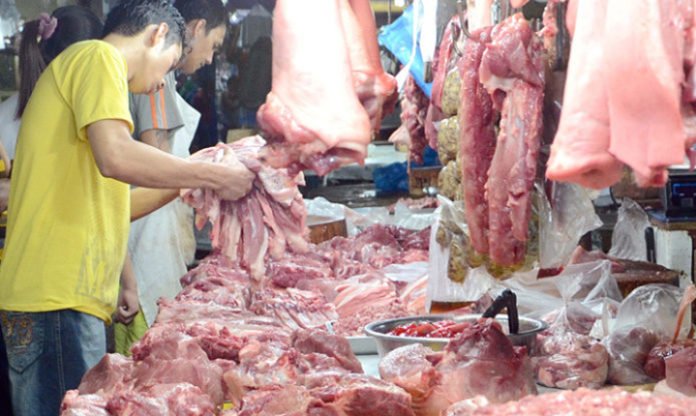
Despite the government’s decision to temporarily lower tariff rates on pork imports, Socioeconomic Planning Secretary Karl Chua admitted that pork prices remain “elevated” this year.
Chua said pork inflation this year “has not been fully addressed” due to production problems.
Economic managers have set an inflation target of 2 percent to 4 percent this year. However, inflation from January to July this year has already averaged 4.4 percent.
The increase in pork prices, the main driver of inflation this year due to the spread of African swine fever, slowed to 38.4 percent in July from 49 percent in June. This allowed meat inflation to settle at 16 percent in July.
“For 2021, my understanding is the still elevated pork inflation has not been fully addressed. Although we are importing, and we have brought down the inflation of pork from 49 percent, for instance, in June to 38.4 percent in July, our domestic hog production is still not fully catching up,” Chua said during the House hearing on the proposed 2022 national budget on Thursday.
Marikina Rep. Stella Luz A. Quimbo then asked Chua why rice prices “quickly fell” following the enactment of the Rice Tariffication Law and why pork prices remained elevated even after President Duterte issued an executive order (EO) lowering the tariff rates on pork imports.
Chua said the shortage of pork supply was caused by a disease while the spike in rice prices was due to a temporary supply shortfall.
“My understanding is that in rice, there was no disease so the freer trade of rice improved our supply. My understanding is that at the time there was a temporary supply shortage. In the case of pork, there is a disease and that disease is still with us,” he said.
Inflation projection
Nonetheless, Bangko Sentral ng Pilipinas Governor Benjamin Diokno said economic managers expect the country’s inflation rate next year to settle at 3.1 percent, within the government’s target of 2 to 4 percent.
“At the moment, we are forecasting 3.1 percent but the risk to inflation is fairly balanced. It could go both ways so right now the peso is appreciating and the price of oil is adjusting downwards so we might hit 3 percent but we closely monitor the developments. Right now our forecast for next year is 3.1 percent and for 2023 is also 3.1 percent,” he said.
Apart from reducing the tariff rates on pork, the government also reduced rice tariffs.
As of August 13, the government has so far lost P2.53 billion in revenues from temporarily lowering pork and rice import tariff rates.
Of the total, the government had incurred a revenue loss of P2.52 billion from reducing pork tariffs since April this year. The government also lost P11.39 million for lowering the tariff rates for rice imports since June.
The Department of Finance earlier said the government expects to lose P5.4 billion by the end of the year from the reduction in pork tariff rates. On top of this, the government is projecting a revenue loss of P40.9 million from the reduction of rice tariffs until May 2022.
Under EO 128, pork tariff rates were temporarily cut to 5 percent for in-quota imports and to 15 percent for out-quota imports for the first three months of the measure; and to 10 percent (in-quota) and to 20 percent (out-quota) in the next nine months. Prior to EO 128, tariff rates for pork imports were at 30 percent (in-quota) and 40 percent (out-quota).
However, EO 128 was only in effect from April 7 to May 14 after President Duterte issued EO 134, repealing the previous issuance. This, after lawmakers expressed concern that the too-low pork tariff rates will flood the market with imported pork and deepen the misery of local hog raisers already reeling from the impact of African swine fever.
Duterte’s signing of EO 134 paved the way for the slight increase in pork tariff rates to 10 percent (in-quota) and to 20 percent (out-quota) for the first three months; and to 15 percent (in-quota) and to 25 percent (out-quota) in the next nine months. The one-year effectivity of EO 134 began on May 15, 2021.
Apart from this, Duterte also issued EO 133, hiking the MAV for pork imports this year to 254,210 metric tons (MT) from the current 54,210 MT. Any unavailable balance at the end of 2021 shall not be carried over to 2022.
President Duterte’s EO 135 which paved the way for lower tariff rates on rice imports took effect on June 2 this year. The EO reduced the tariff rates for rice to 35 percent from 40 percent (in-quota) and 50 percent (out-quota) for one year.

